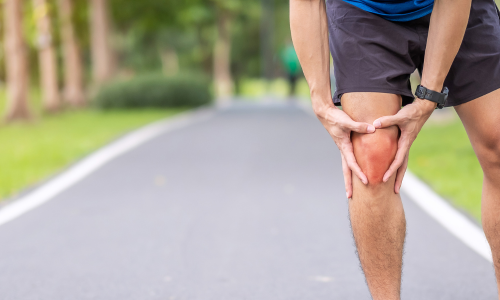Osteoarthritis Knee
Osteoarthritis Knee
Understanding Osteoarthritis of the Knee: Causes, Symptoms, and Treatment
Introduction:
Osteoarthritis (OA) of the knee is a common degenerative joint condition that affects millions of people worldwide. It occurs when the protective cartilage that cushions the ends of your bones wears down over time, leading to pain, stiffness, and decreased mobility in the knee joint. Understanding the causes, symptoms, and treatment options for osteoarthritis of the knee is essential for managing the condition effectively.
Causes:
Osteoarthritis of the knee can develop due to various factors, including:
- Age: The risk of developing OA increases with age, as the cartilage in the knee naturally degenerates over time.
- Genetics: Some people may be genetically predisposed to developing osteoarthritis.
- Obesity: Excess weight puts added stress on the knee joints, increasing the risk of cartilage damage.
- Previous knee injuries: Previous injuries or trauma to the knee, such as fractures or ligament tears, can increase the likelihood of developing OA.
- Joint overuse: Repetitive stress on the knee joint from activities such as running or heavy lifting can accelerate cartilage wear and tear.
Symptoms:
The symptoms of osteoarthritis of the knee can vary from person to person but commonly include:
- Pain: Persistent knee pain, especially during weight-bearing activities or after prolonged periods of inactivity.
- Stiffness: Stiffness in the knee joint, particularly in the morning or after periods of rest.
- Swelling: Swelling or inflammation around the knee joint.
- Decreased range of motion: Difficulty bending or straightening the knee fully.
- Crepitus: A grating or crackling sensation in the knee joint during movement.
Treatment Options:
While there is no cure for osteoarthritis of the knee, several treatment options can help manage symptoms and improve quality of life:
- Medications: Over-the-counter pain relievers such as acetaminophen or nonsteroidal anti-inflammatory drugs (NSAIDs) can help alleviate pain and inflammation.
- Physical therapy: Exercises in Orthopedic Physiotherapy designed to strengthen the muscles around the knee joint and improve flexibility can help reduce pain and improve mobility.
- Lifestyle modifications: Maintaining a healthy weight, avoiding activities that exacerbate symptoms, and using assistive devices such as braces or shoe inserts can help alleviate knee pain.
- Injections: Corticosteroid injections or hyaluronic acid injections may be recommended to provide temporary relief from knee pain and inflammation.
- Surgery: In severe cases where conservative treatments fail to provide relief, surgical options such as knee arthroscopy, osteotomy, or knee replacement surgery may be considered.
Conclusion:
Osteoarthritis of the knee can have a significant impact on daily life, but with proper management and treatment, individuals can effectively manage symptoms and maintain an active lifestyle. If you are experiencing knee pain or stiffness, it is essential to consult with a healthcare professional for an accurate diagnosis and personalized treatment plan. Early intervention can help prevent further joint damage and improve long-term outcomes.

Book an Appointment
Physiotherapy: Your Path to Pain Relief
Physiotherapists are movement experts who can help manage and reduce pain. Through manual therapy, exercise programs, and education, they can improve your mobility and function, empowering you to live an active, pain-free life.
